Key in a search term below to search our website.
Key in a search term below to search our website.
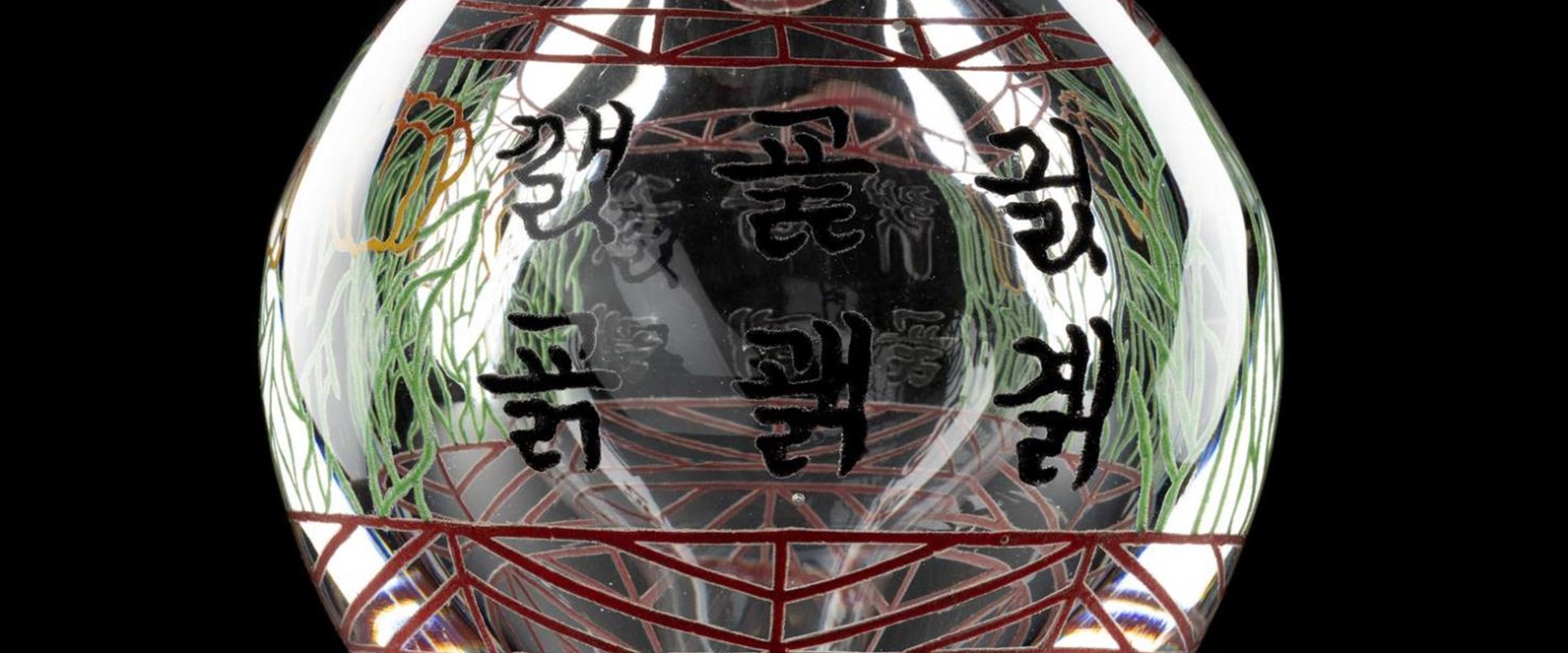
How can a vase reflect the experience of living between two cultures? This beautiful vase created by South Korean, Edinburgh-based artist Choi Keeryong, expresses this sense of 'inbetween-ness'.
Date
2017
Made by
Choi Keeryong (b.1976)
Made from
Glass and bone china
Made in
Edinburgh
Dimensions
Height 23cm, diameter 15cm
Museum reference
On display
Exploring East Asia, Level 5, National Museum of Scotland
Did you know?
The characters on the vase are Choi's own invention and don't have any meaning in Korean. Because to a Western audience they look genuine, he is setting up an expectation of meaning, yet refusing to supply it.
“'I want to create a tension in my work. That's how I provoke some feeling of uncertainty, of ambiguity, in the viewer.'- Choi Keeryong
Artist Choi Keeryong studied at Hanyang University in South Korea before moving to Scotland's capital in 2010 to complete a Masters and PhD in glass working at Edinburgh College of Art.
As a migrant working in a foreign culture, he takes inspiration from his 'inbetween-ness' to create a sense of ambiguity and the uncanny in his creative practice. His works are hybrid formations, combining a glass body with elements taken from mass-produced English porcelain teapots, which he sources from car boot sales and charity shops around Edinburgh.
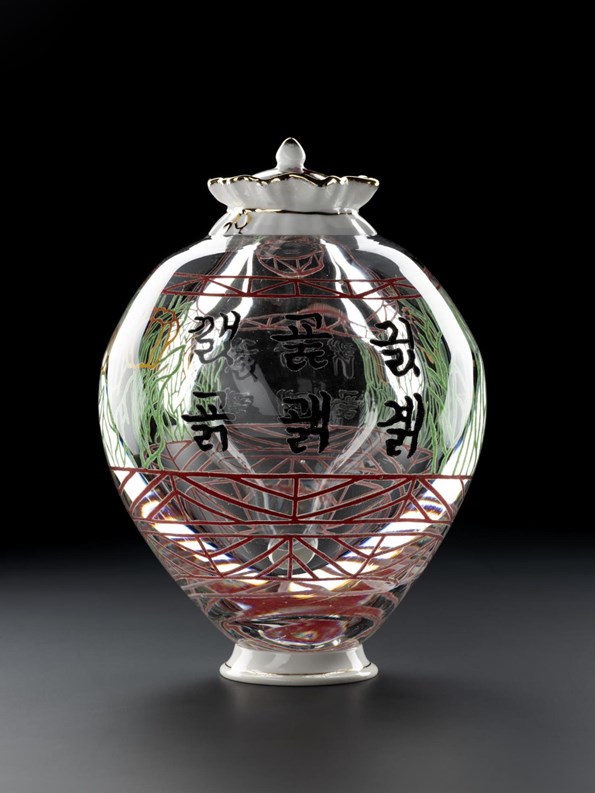
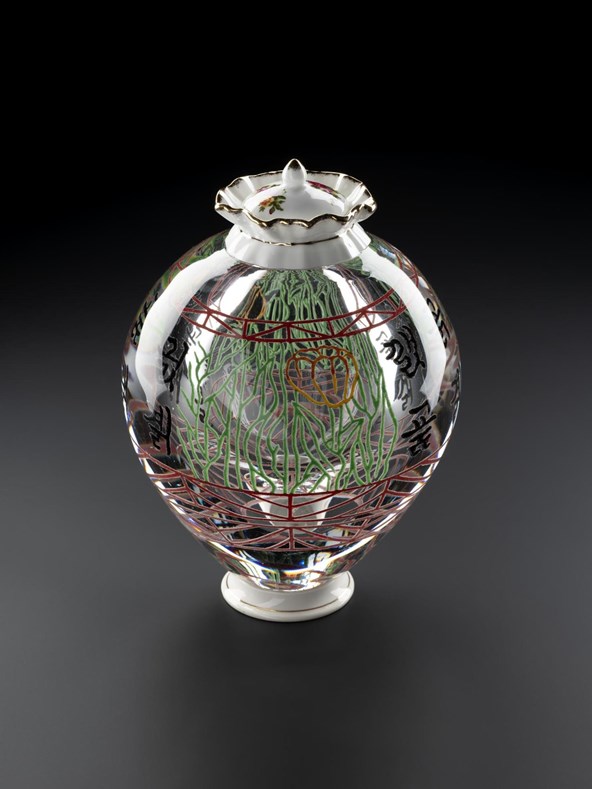
Above: Korean Glass 15 by Choi Keeryong.
In his work, Choi has developed inlaid colouring techniques inspired by the traditional Korean sanggam method, where engraved designs are decorated with black or white clay, then glazed. You'll be able to see this technique used in ceramics displayed nearby Choi's work in the Exploring East Asia gallery, dating from the 12th to the 16th century.
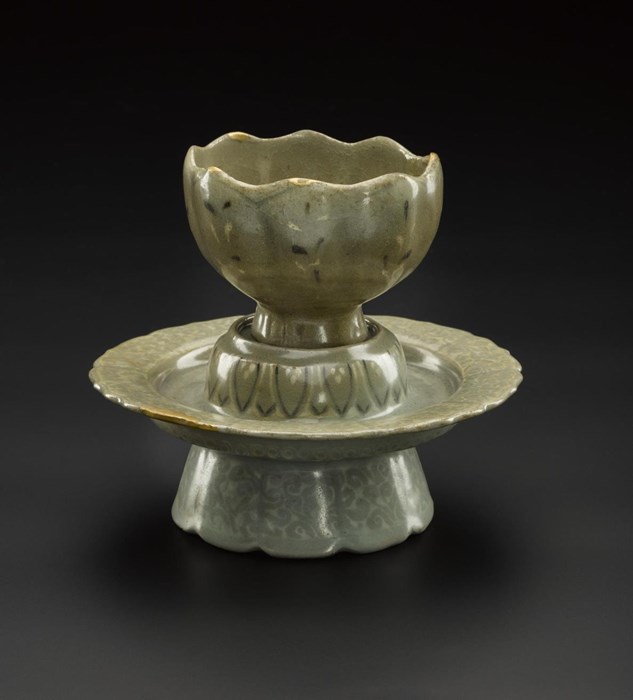
Above: Fluted, chrysanthemum-shaped wine cup and stand of stoneware, decorated with inlaid designs (sanggam) of chrysanthemums and lotus petals in white and brown slip under a celadon glaze: Korea, Goryeo Dynasty, early 13th century.
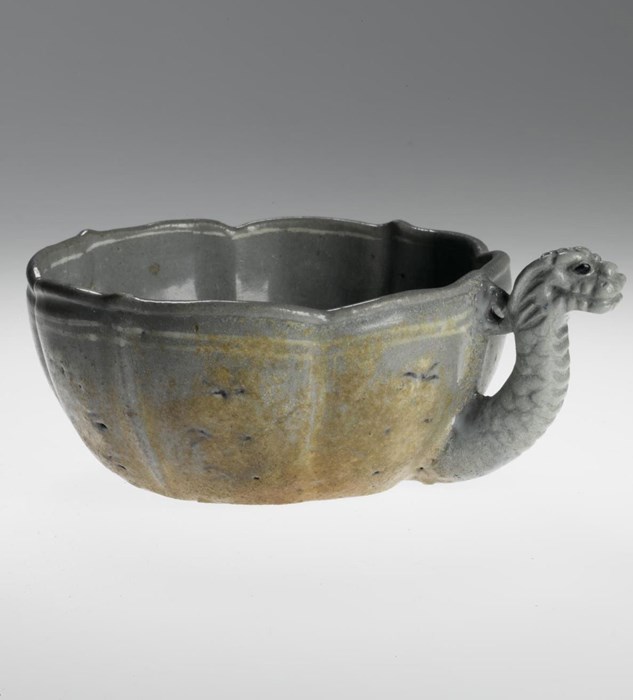
Above: Fluted cup of stoneware with one moulded dragon handle, decorated on the interior and sides with slip inlay (sanggam) of floral motifs in white and black: Korea, 12th century.
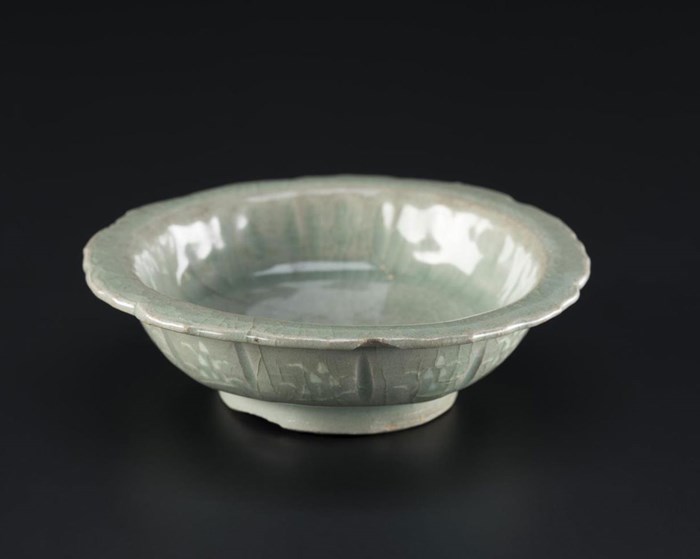
Above: Shallow bowl of grey porcelain with a crackled greenish-grey celadon glaze with inlaid slip (sanggam) decoration: Korea, Goryeo Dynasty, 13th century.
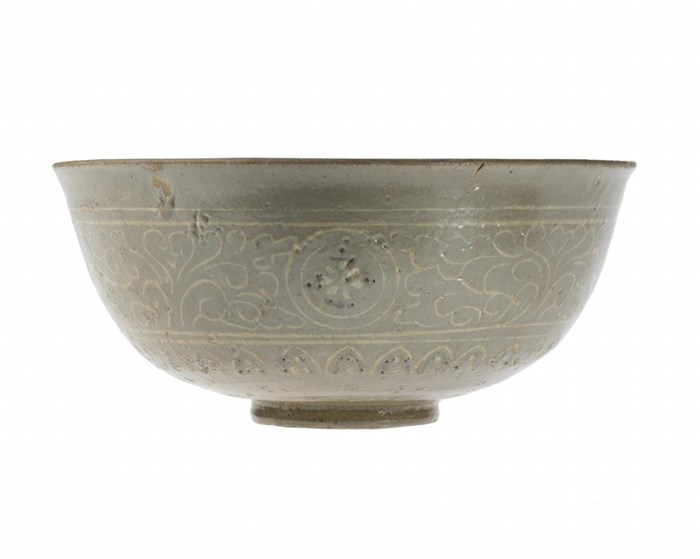
Above: Stoneware bowl inlaid with underglaze inlay (sanggam) floral designs in black and white clay. Korea, Ganghwa Island, 14th-16th century.
Inspired by sanggam, Choi carves geometric patterns and made-up characters into the surface of his vessels, then encapsulates them between layers of transparent glass.
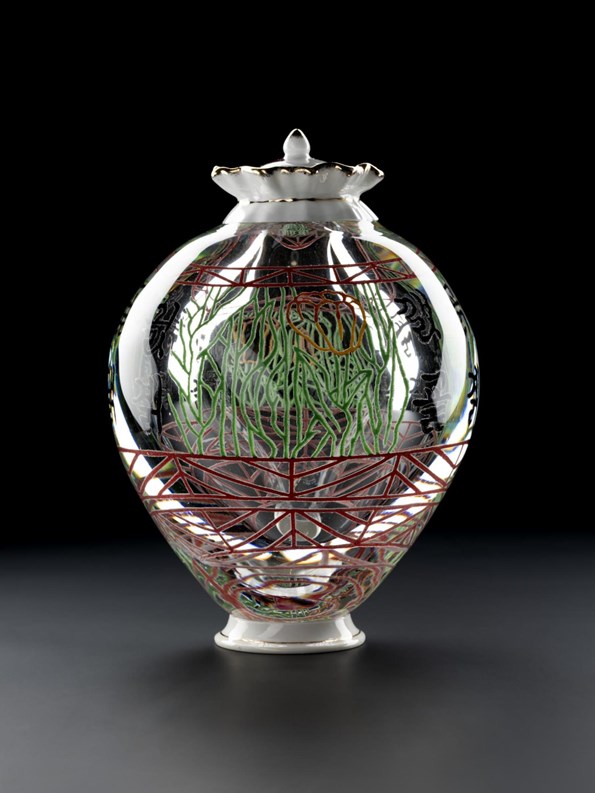
In this film, made by Craft Scotland, Choi discusses his making process:
This vase, acquired by the Museum in 2017, is part of a series of works that combine Korean and British visual culture to create a new blend. With its mix of materials and methods, it expresses Choi's aim of creating 'a perfect Asian-looking vase' that is, in reality, a figment of his artistic imagination.